

Every so often industry bigwigs champion the need to become customer-centric regardless of the touch-point. And within that context, the importance of live chat for business keeps getting mentioned. Why though? Do customers even prefer chatting? ?
The answer is a resounding yes. Live chat is convenient for customers. They can multitask and simultaneously ask for help in real time, without having to waste time on calls or emails.
According to Forrester, site visitors who use web chat are 2.8x more likely to convert than those that don’t.
Remember though: merely embedding one of the best live chat software on your website doesn’t guarantee top customer experiences.
Bearing that in mind, let’s go through some actionable live chat practices to help you stand out.
Live Chat For Business: 9 Best Practices
Live chat is contextual marketing but these best practices will certainly help you navigate the complexities.
1. Give that name a face
Adding a stock photo next to your name eliminates customers’ psychological discomfort of having to talk to a faceless corporate entity. Basically, they’re reassured that an actual person is looking out for them.
Of course, chat quality matters big time but let’s admit that in the virtual world seeing is believing. See for yourself. Between Outgrow (L) and Sotheby’s ®, who instills an immediate sense of trust?
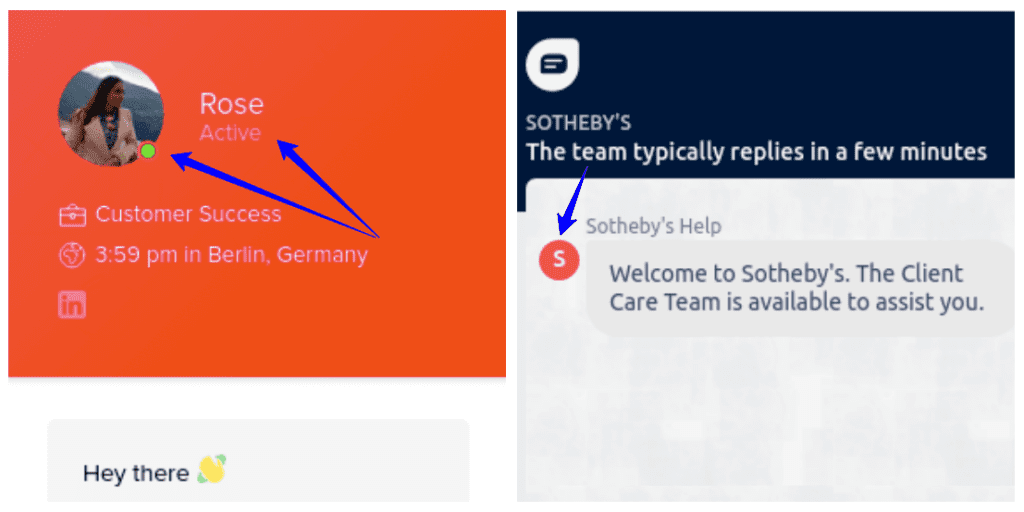

2. Adopt a conversational tone
Conversations are 5X likely to convert when a human jumps in but what kicks it up a notch is when you write like you talk. Prospects feel at ease and this also helps the chat rolling more organically.
A few do’s and don’ts to keep in mind:
- Use the customer’s name while greeting them.
- Write short sentences in active voice.
- Don’t make grammatical mistakes.
- Use contractions, such as ‘you’ll’, we’ll, and let’s.
- Don’t use buzzwords you toss around internally.
- Consider using interjections like ‘yay’, ‘yeah’, and ‘nope’.
- Ask questions.
- End well.
Other key points to remember:
- Follow the good ol’ copywriting rule of using your customers’ vocabulary.
- Stay consistent in your voice, but mirror your customer’s tone. Are they formal or friendly? If excited, synergise. If angry, tone down on your enthusiasm.
- Crack a joke and use emojis if it’s fitting.
- No sarcasm or irony.
- Offer multi-lingual support if you have a wider reach.
- Use positive language with a problem-solving intent. Bad example: ‘No, you can’t return the product’; Good example: ‘It seems you’re way past the return date, but let me see if there’s something I can do’.
3. Keep standard responses handy
Using them on the fly will help you’ll achieve three goals:
- increase your average response time,
- handle more queries than usual, and
- spend more time on other ‘high-value’ conversations.
The trouble with scripted responses though is that they’re impersonal and formulaic. But who says you can’t tweak/personalize them?
4. Responsiveness: quality and consistency beats speed
Conventional wisdom says that shorter wait times and speedy responses boost customer satisfaction. But before you jump the gun, it’s good to know that the two don’t necessarily result in happy customers.
Studies have shown that organizations with a CSAT score 90% or higher CSAT had an average wait time of 1 minute and 32 seconds, while organizations that scored lower than 90% had a wait time of 30 seconds.
And just like wait times, the same analysis found that organizations with a 90% or higher CSAT score had an average chat duration of 12 minutes and 26 seconds, 13% longer than organizations with lower scores.
Didn’t expect it, right? Apparently, customers love receiving individualized attention, even if it means they have to wait longer. They also like the fact that they’re being treated as humans and not ticket numbers.
By the way, if you’re flooded with chat inquiries, like Goldsmiths, you can keep your customers’ impatience aka unnecessary friction in check by mentioning how long until they get to speak to an agent.
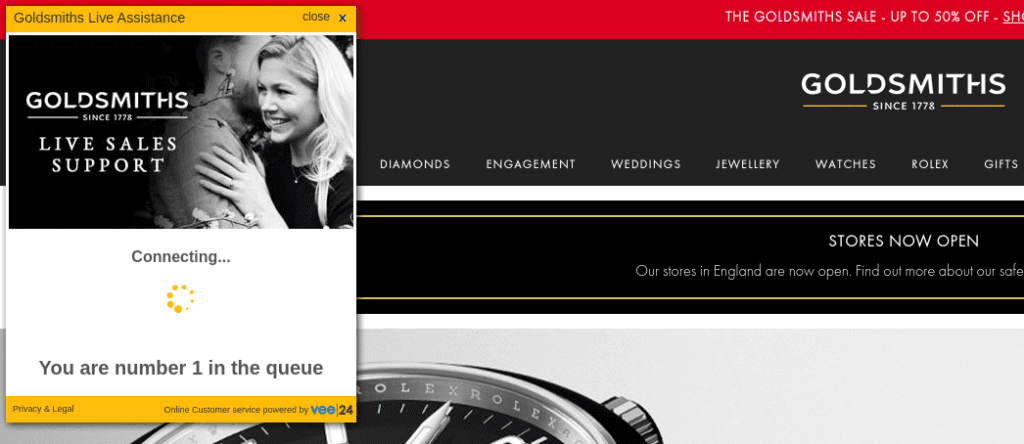

5. Embed live chat box on high-intent pages
Selectively placing live chat plugins on high intent pages ensures you don’t lose out on leads with a high purchase intent. In turn, you spend more time having quality chats and collect valuable customer insights that speed up your sales cycle.
Sold to this idea then? Fab!
Now, you could either wait for customers to initiate a conversation or based on user behaviour metrics proactively chase them.
Arguably, proactive chats are targeted and seem interruptive, but can be highly effective at engaging a customer at the right moment in their journey. With only one of the top ten major US retailers using proactive live chat, you can’t ignore its potential.
To initiate a genuinely helpful proactive chat:
- Don’t barge in too soon. Consider the average time spent on page, browsing history on your website and accordingly set triggers.
- Personalize. Tailor chats based on pages being viewed. On the shopping cart page? Ask if they want to know about shipping or returns.
- Don’t end the chat abruptly. This one’s true for both proactive and reactive chats.
Note: If your traffic volume isn’t high, feel free to add a chat widget on every page. Also, from the UX perspective, the chat box should neither be difficult to spot nor distracting.
6. Combine live chat and emails
When you get more people to chat with you, you automatically reduce customer service costs. So as a reminder, flaunt this fantastic feature in your email campaigns. After all, lets’ face it, not everyone might know about it.
Here, take cue from Team Estée Lauder:


Next, when you’re offline, there’s a fair chance of visitors slipping through the cracks. In such situations it’s a good idea to ask them to get in touch with you over email.
Sendinblue’s chat widget, for instance, lets prospects drop you an offline message via email. This way, once you’re back to your desk, you can talk the talk and walk them down the funnel.
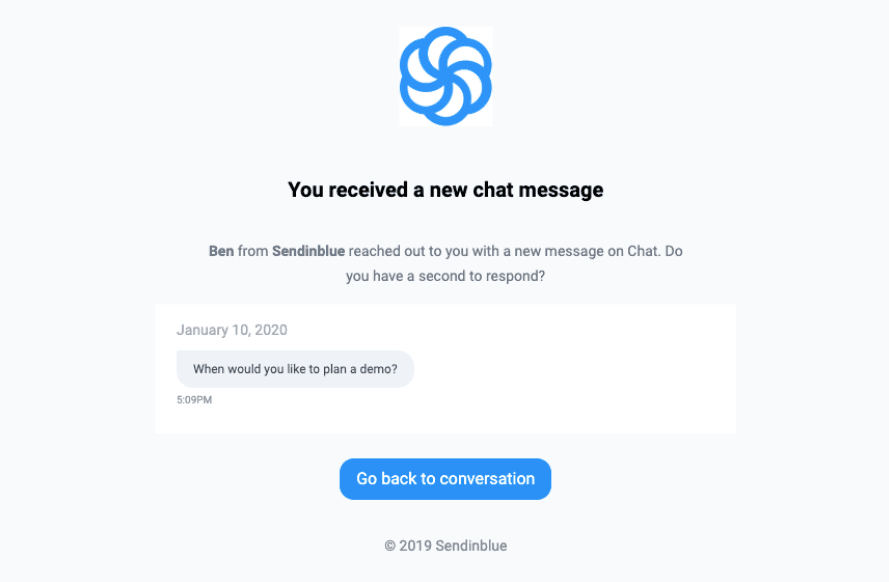

However, keep in mind that this message isn’t an explicit permission to add them to your email list.
Always ask your chat recipient for consent to be added to the database and let them know what kind of messages they’ll receive.
Doing so will help grow your email list and nurture + engage prospects/customers through personalized emails.
Finally, if you’re worried about capturing low-quality leads, give customers a choice between real-time help and self-help. Canyon Bikes does so neatly:
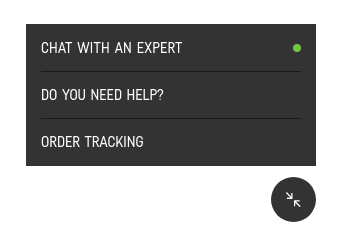

7. Set clear expectations
Consumers spread negative word of mouth about poor live chat experience. Don’t believe it? Here, have a look at an annoyed and angry customer tweet about their experience:
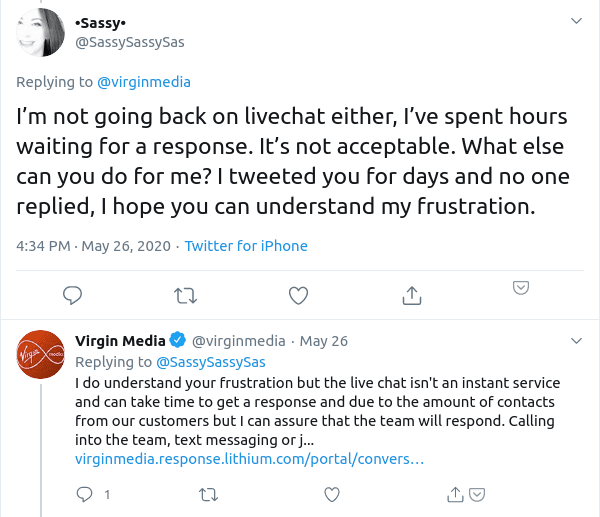

Sure, it’s understandable you can’t be around 24X7, but mentioning when you’ll hop online next can prevent customers getting frustrated for not being able to talk to you.
Learn from Olay:
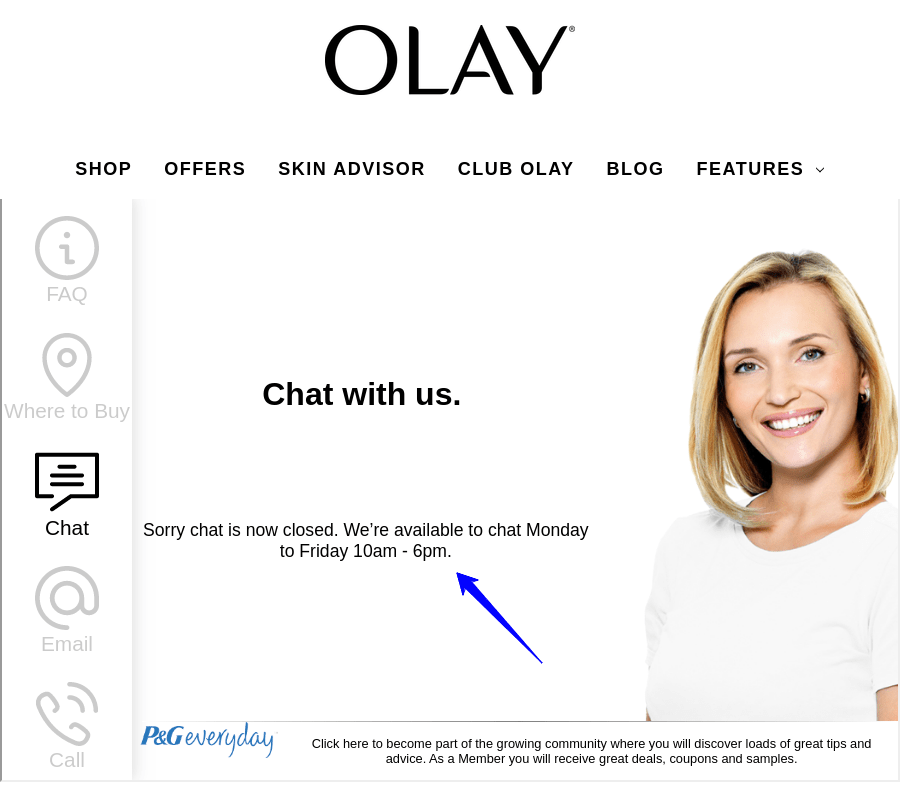

8. Optimize for mobile
Statista reports that mobile accounts for approximately half the web traffic. In fact, it’s been hovering around 50% since the 1st quarter 2015 to the 1st quarter 2020.
And while it’s true that the numbers are higher for the B2C sector, irrespective of the industry, optimizing your website for mobile browsing has become a non-negotiable.
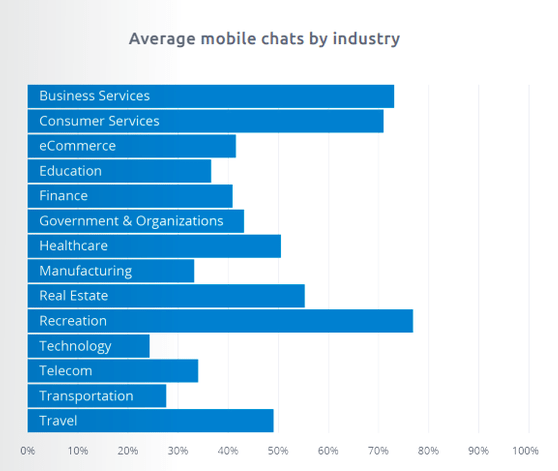

Indeed, with chatting on mobile comes the challenge of the screen size and distraction, but that can be taken care of if you test the size of the live chat and train agents to handle inquiries with short responses.
Also, when shortlisting chat softwares, look for features that make your customers’ lives easier, such as:
- Ability to chat, share files, and browse simultaneously
- Resume chatting in case of network issues or phone calls
- Receive notification when you send your customer a message.
9. Invest in building a dream team
Customers deserve exceptional support, but for that you must have a team of people that can empathise, multi-task, collaborate, and manage expectations of every type of a customer. Put simply, step up your hiring game.
Also, train them well so that combined with playing by the rule book and capitalizing on presence of mind, they’re able to create a top class customer experience that builds customer loyalty.
Finally, measure live chat metrics and create a culture of constructive feedback. Also, talk to reps and look for golden insights about your customers that according to them can improve the overall customer service strategy.
You’re now ready to start using live chat for business
Thanks for stopping by!
Now go, break a leg and become one of the few businesses that use live chat to fast-track their way to their customers’ hearts.
If you’re looking for live chat software, we recommend you try ours. It’s available on the free plan. See you on the other side then?
By Sharanya Manola, freelance writer for B2B SaaS.
 Deutsch
Deutsch




















